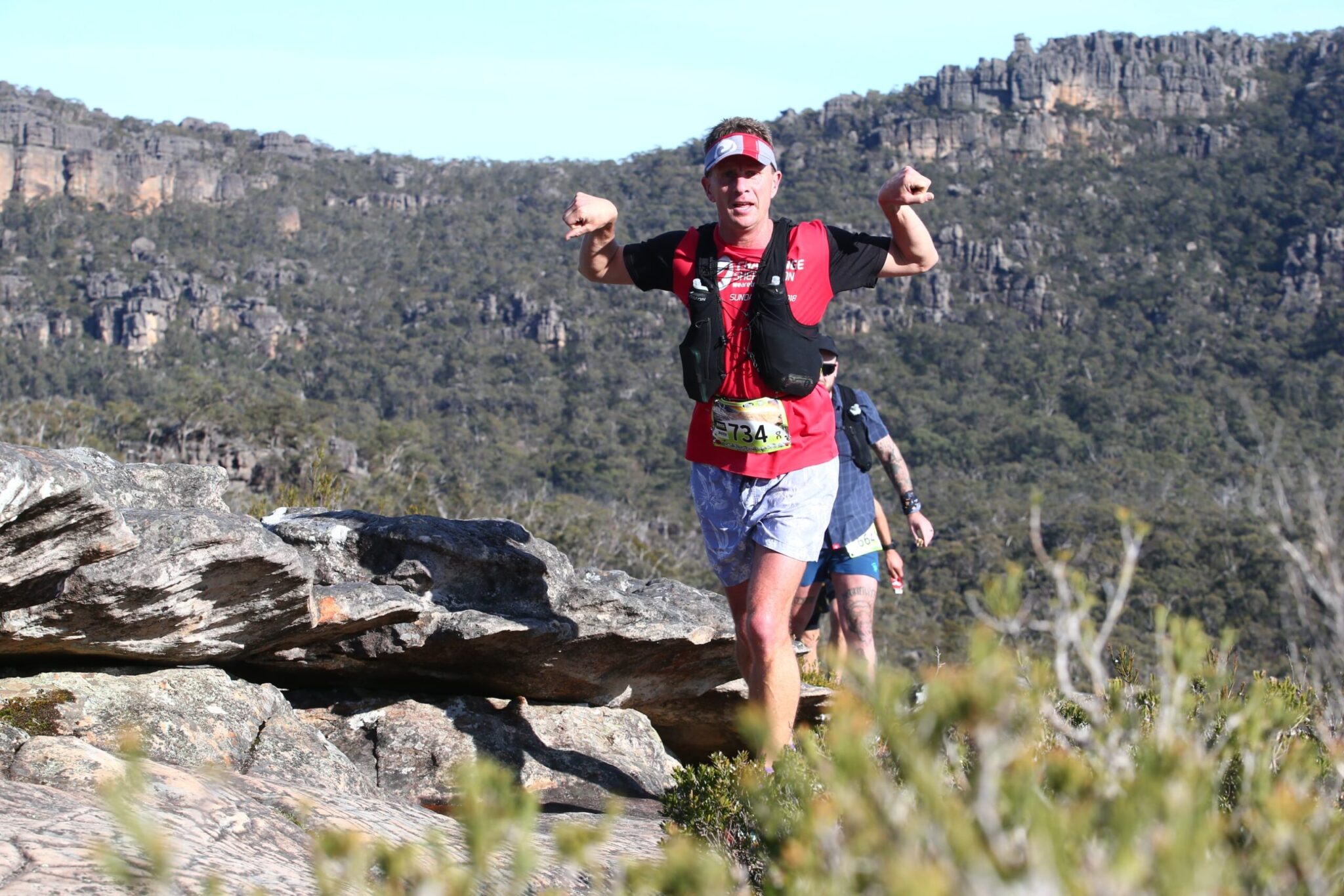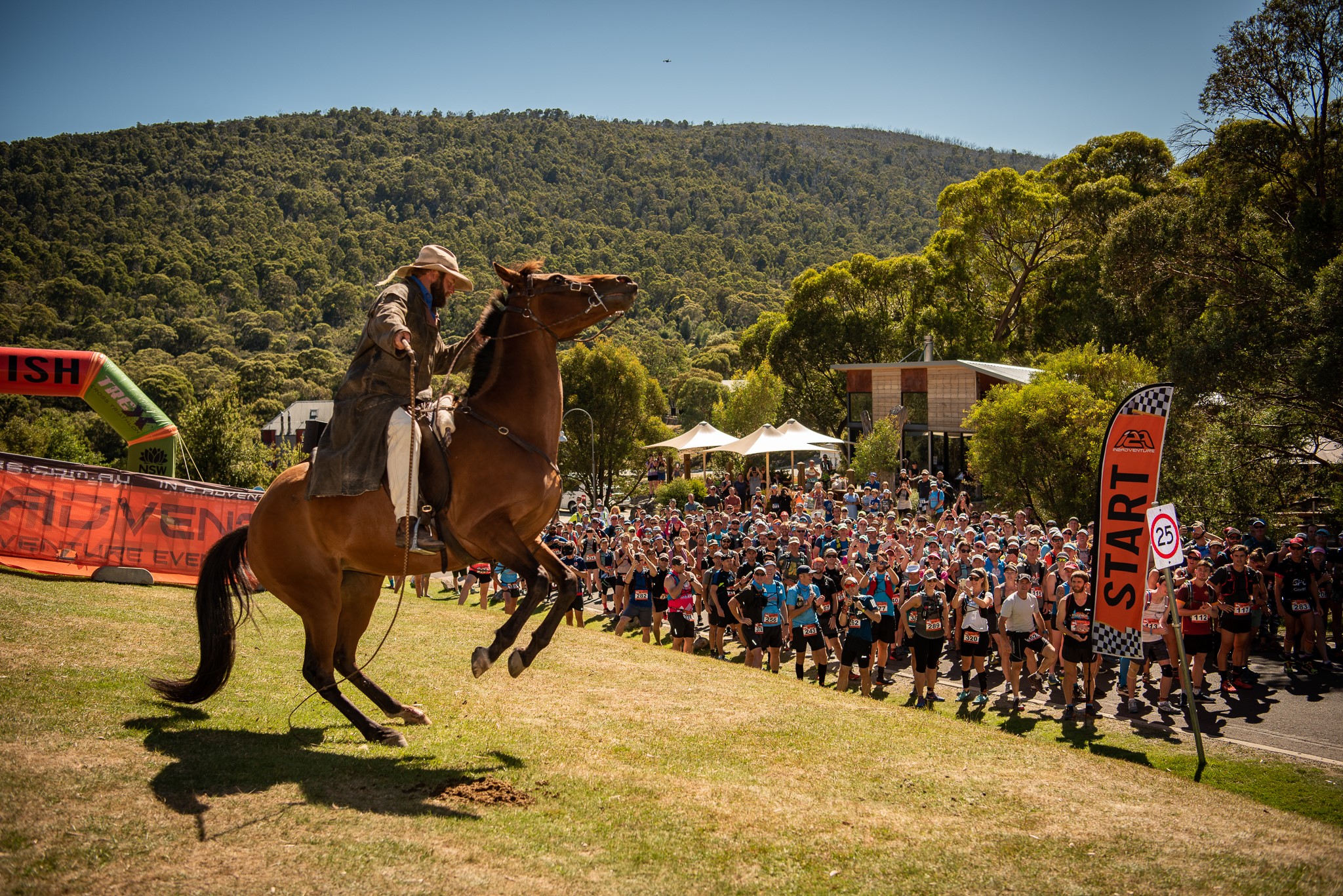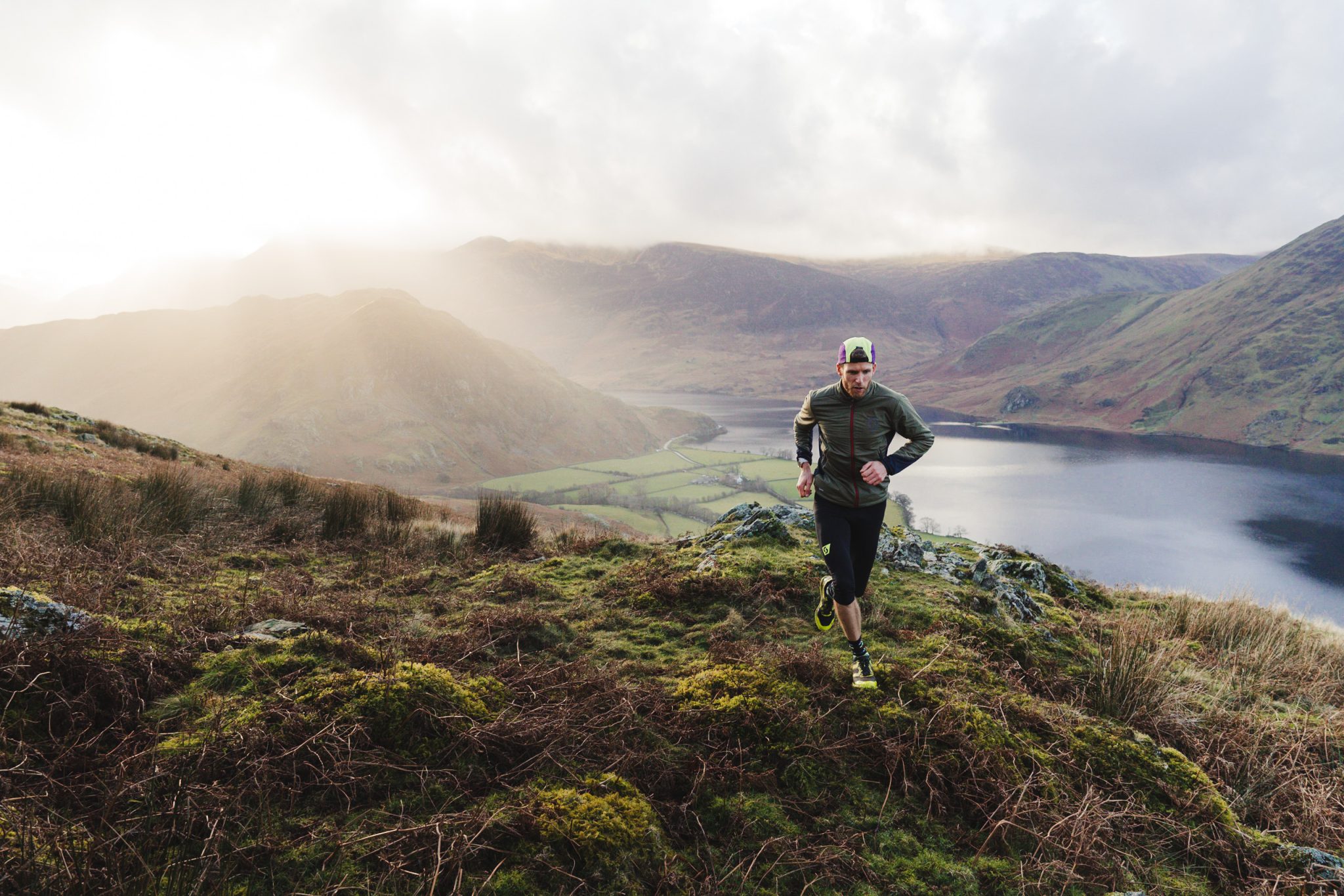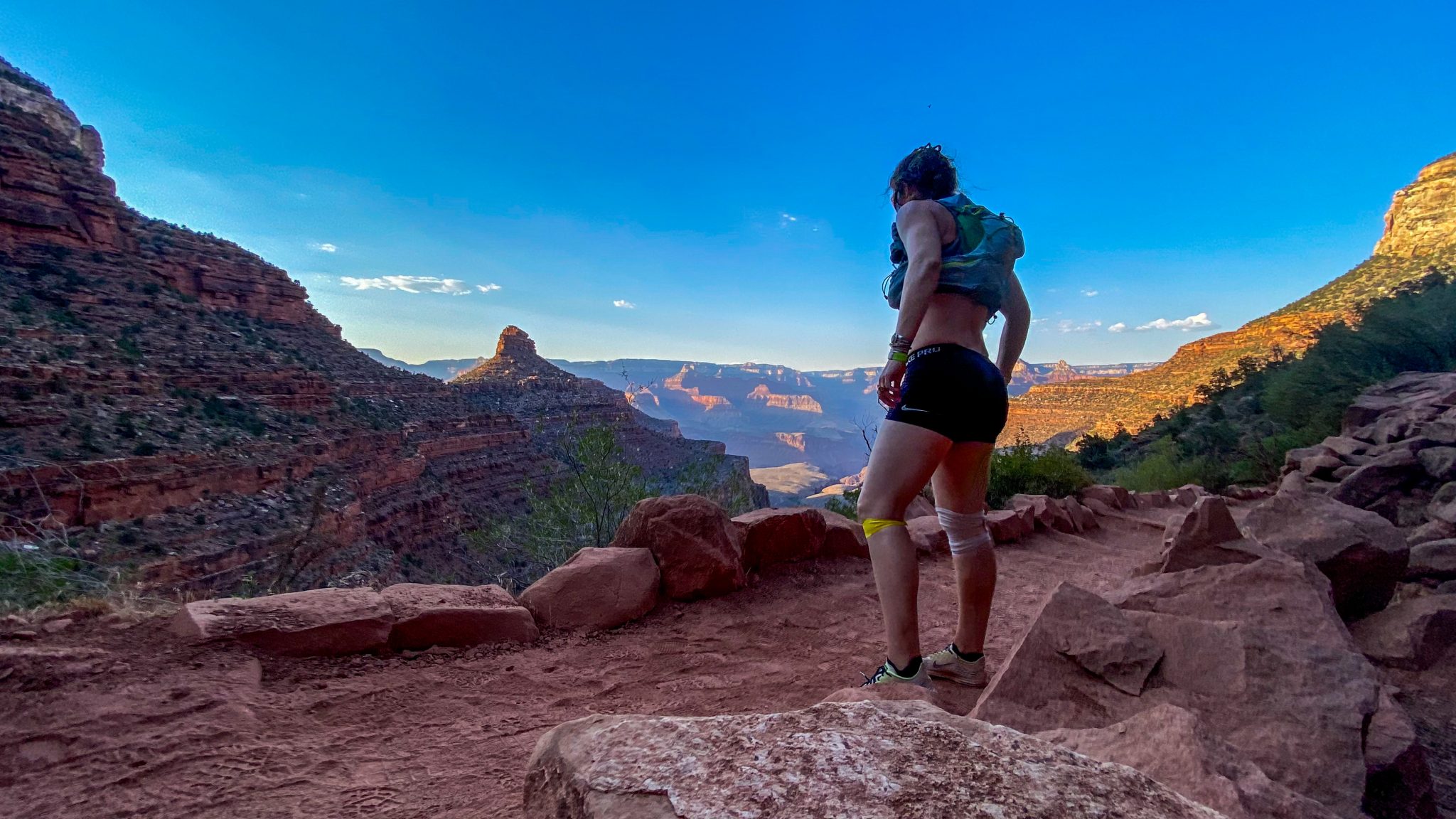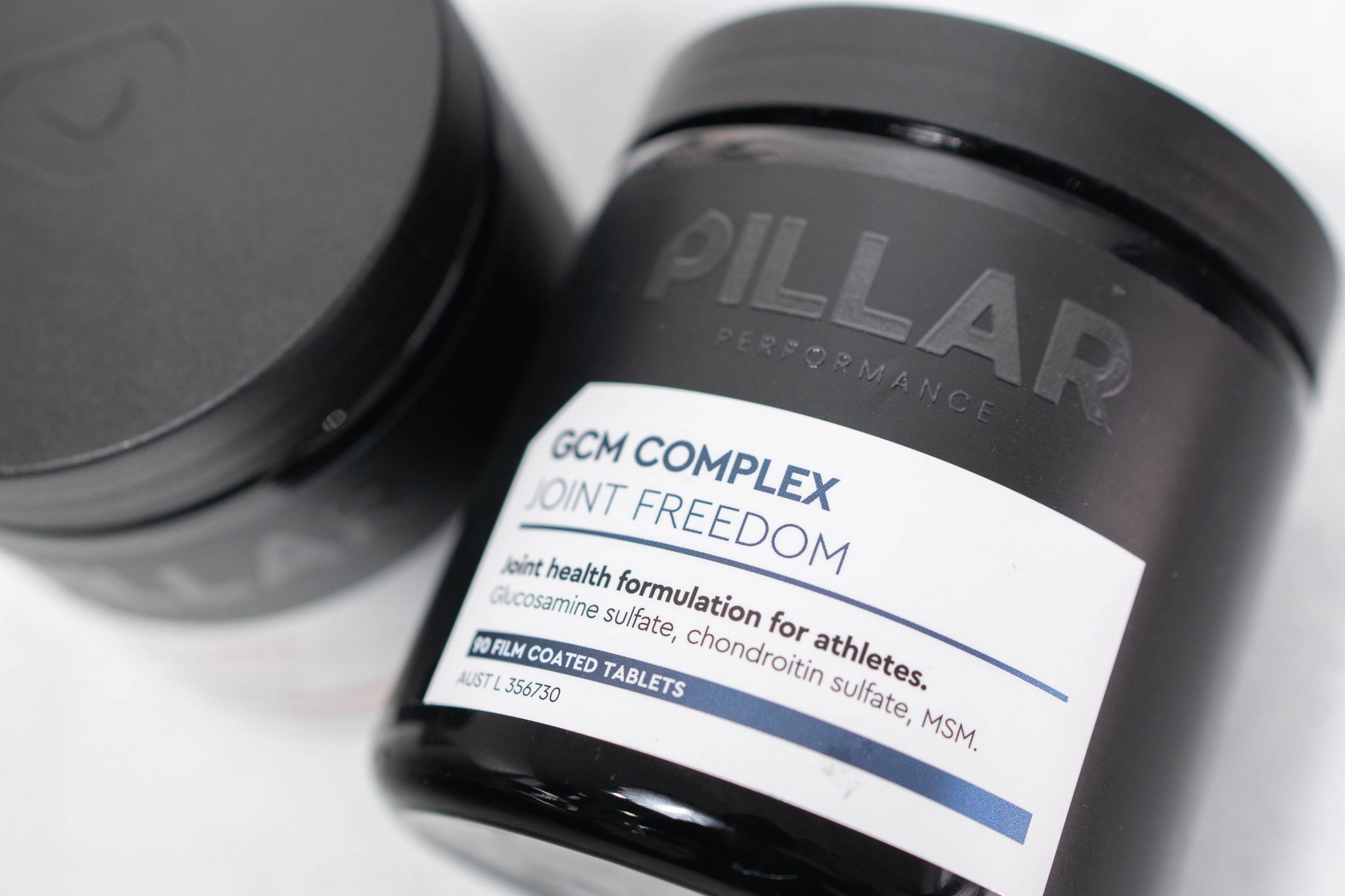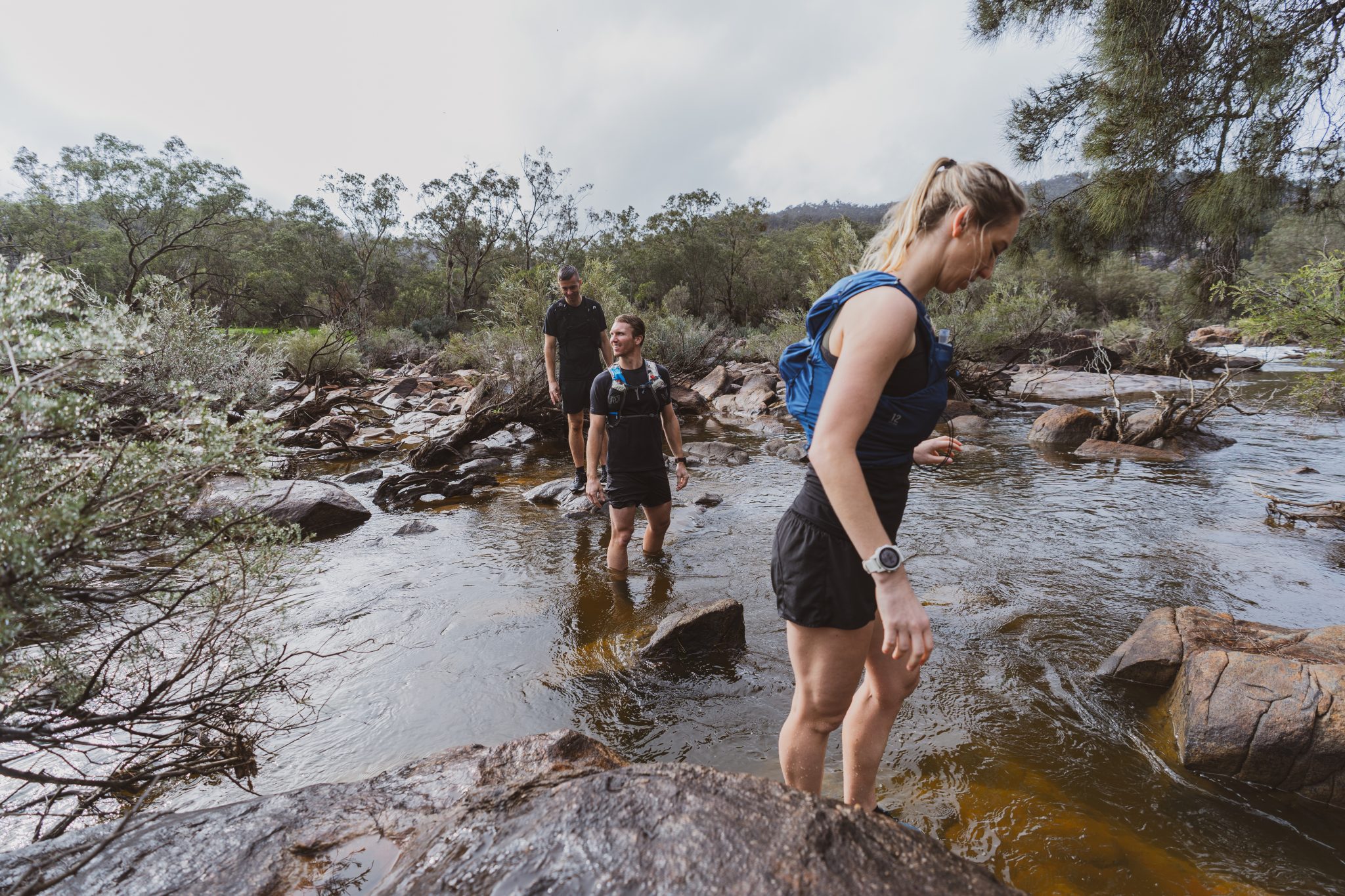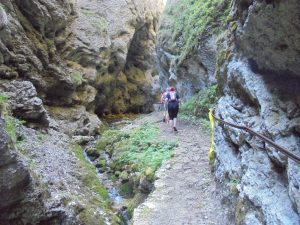
In 2019, New Zealander ROGER LESLIE completed the formidable yet breathtaking Swiss Canyon Trail ultramarathon. He gives Trail Run Mag a recap of his remarkable adventure – packed with everything from mind-bogglingly steep ascents and descents, to stunning scenery, to helping an injured runner, to ice-cream!
The 5am blast of an alp-horn released the pent-up energy of 500 runners into the brisk pre-dawn of the Val de Travers in Canton Neuchãtel, Western Switzerland. The front runners disappeared in a swirl of frost breath and bobbing lights. The normal early race chatter was in French, but comforting just the same.
I was more nervous than usual because I had done no serious training in the six weeks I’d been in Europe. My normally competitive nature was on hold and my race plan was no more ambitious than lasting the distance. I had, with unusual foresight, only entered the 82km event with 3,000 of vertical, but I suspected I’d need my headlamp again before the day was over. I’ve found that such whimsical nonsense as “you’re only as old as you feel” is a poor substitute for actual fitness.
The race briefing the night before, apart from being in French, could have been given by Terry Davis at the Northburn. There was the same apparent delight in the delivery of doom and danger, the same sadistically happy smile and gestures, and the same holding up of course-marking paraphernalia, but those were the only things I understood. The key to staying on track, it seemed, was in the bright yellow tape with the race name, and so it turned out. I was to be guided and encouraged by hundreds of metres of this tape as it forbade wrong turns and called “this way!” at crucial intersections.
As I ambled along, I felt pleasantly fed. The hotel in Couvet (a race sponsor) had put on a special breakfast from 3am. It was surreal to walk down the stairs to the smell of warm croissants at what is universally accepted as an ungodly hour. The hotel staff should have received a race medal, too. This was my second ultra in Europe and both had offered a free breakfast, which was gratefully eaten.
The Swiss are a compulsively tidy people, even when they run. As we circled around the edge of a private field, everyone remained in single file with no-one cutting across the grass, as I’m sure would have happened at home. I saw no rubbish dropped along the trail. The rising sun shone at last through the tall pine trees, warming my face and surrounding the heads of runners in front of me with golden halos. I was in my happy place, determined to enjoy this before time, inertia and gravity wore the shine off my euphoria.
As we started to climb Le Soliat, I fell in with a Swiss German from Zurich and, for the first time, was able to converse with someone. He, like me, was a veteran of such events and a lot of fun to be with. He filled me in on the history and place names of the area. It was great to hear the French names roll off his guttural Swiss German tongue, names like la Côte-aux-Fées and Fleuriers. He told me some of these trails had been used for thousands of years and that the Swiss had always preferred walking as a mode of transport.
The exit of the main canyon was 1,000 metres above the entrance and, as these were the only way in and out, I thought this would not be a good place to be in heavy rain. Many of the steps were hewn out of the limestone and often a handrail on the cliffside was the only security offered. The Swiss seemed to assume people found in such places were responsible enough to manage their own health and safety. The views were spectacular, the waterfalls transcendent, and as we plateaued at 1,400 metres, we were met with the age-old melody of Swiss cowbells. There were farms up there in the stratosphere. The cows themselves seemed not to be surprised by the passing of strange processions of numbered people, and continued grazing and clanging their bells.
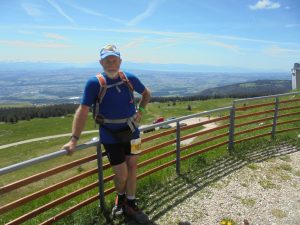
The mid-race mountain peak was Le Chasseron and from there I could see Mont Blanc, standing white and aloof beside its sisters Matterhorn, Eiger and Jungfrau. I had hoped to meet my crew here but the map I had given them was more topographical than road oriented, and they were enjoying themselves in different alpine terrain to me.
I experienced my only navigational glitch while descending Le Chasseron. I failed to see a right-angle turn where the 100km trail re-joined the 80km after the “loop of despair’”and I started following the yellow tape in the wrong direction. I was met by two angry Frenchmen sporting 80km numbers who had gone several kilometres in the wrong direction before turning back. They bustled me back to the missed turn and a confrontation with the unfortunate youth who was, instead of marshalling runners down the correct path, absorbed with his phone. Their Gallic fury was mighty to behold. The poor chap was sitting on a rock, phone forgotten, staring open mouthed, and with mounting fear at their trek-pole-waving tirade. He seemed to believe, and with good reason, that he was in physical danger. I didn’t need French to get the picture; the “peep, peep, peep” phone pantomime and the threatening poles carried a clear enough message. The exchange was over as quickly as it had begun. The lad sat back down on his rock, apparently promising to do better and concentrate on the job at hand, while we three set off down the steepest descent I have ever done.
I could call it a goat track but I don’t think any self-respecting goat would have been happy there. There was loose shale underfoot as we zig-zagged down through the woods and I had to, more than once, resort to tree-hugging to avoid potentially fatal plunges. I was just being a baby, as it turned out, because I saw such a fall when an athletic young runner had a spill that seemed to go on forever. I watched helplessly as she slid, rolled and tumbled until her fall was finally arrested by an unpleasant-looking clump of dog rose briar. I could scarcely believe she was alive let alone unbroken as I inched my way down to her. I gathered her loose equipment as I went: drink bottle, poles, race number, hat and, incredibly, one shoe. Language incompatibility prevented me from doing a proper patient assessment but apart from bruises, bleeding, abrasions and a rapidly swelling goosebump on her head, she was in remarkably good shape. She seemed to want to be left alone to lick her wounds and extract herself from the foliage. I promised to report her accident and ambled on.
As I traversed a picturesque forest glade in the Butts area, a Swiss Maiden in traditional garb was sitting on a log with an accordion. She sprang up and with some accompaniment from a cowbell, she filled the air with beautiful music that was hard to walk away from. Perhaps she wasn’t real and this was the meaning of Côte-aux-Fées.
Later, on a road section, I caught up with my crew. They were a great combination of my wife (a veteran of such events) and a young friend who was a veteran Swiss. They had ice-cream, and Swiss ice-cream 10 hours into a 15-hour event is as idyllic as it gets. They re-established the happy feeling and put a spring back into my flagging steps. They were on top of the map now, perhaps the real meaning of topographical, and they reappeared twice more dispensing ice-cream and happiness. Like a horse quickening its pace as it smells the familiar stables, I homed in on Couvet with 80km of Helvetian splendour behind me and the welcome sight of perhaps the best French word of all – Arrivée.
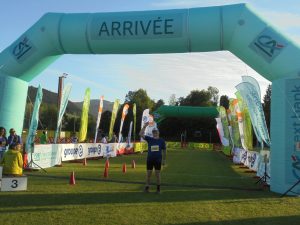
As I came up the finishing chute, I heard my name and then something else was said for which there was additional applause. A young Dane who finished just after me asked, “Did you understand what they said?” I admitted I hadn’t. He replied, “They said you are the oldest finisher so far and that you are also a hero for helping an injured runner. Congratulations!”
Maybe I need to learn French.
I have a list of things the Swiss do best. So, to watches, army knives, cuckoo clocks, democracy, chocolate and cowbells, I must add ultra trail events.

